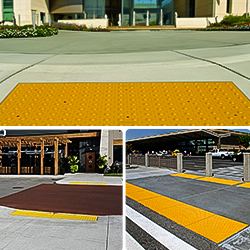









As populations age worldwide, urban planners face the immense challenge of creating inclusive living environments that meet the evolving needs of senior residents. One promising solution is adopting principles of universal design to build cities accommodating of all abilities. This approach supports not only older adults but people of all ages and capabilities.
Canada and many other nations are experiencing rapid growth in their aging populations. According to Statistics Canada, seniors aged 65 and over currently makeup 19% of the country's residents. This figure is projected to surge to between 24-28% over the next three decades, representing over 10 million Canadians.
Such demographic shifts underscore the urgent need for accessibility. Traditional urban planning models focused on mobility often neglect other impairments common in later life, like hearing or vision loss. As people age, temporary or permanent disabilities can heighten due to various health conditions.
Universal design refers to broad-spectrum designs that provide ease of use for individuals of any age or capability in an intuitive, equitable manner. Coined by architect Ronald Mace in the 1980s, the concept of universal design promotes barrier-free, inclusive environments beneficial to all.
Equitable Use: Design is useful and marketable to people with diverse abilities.
Flexibility in Use: Accommodates a wide range of individual preferences and abilities.
Simple, Intuitive Use: Easy to understand regardless of experience, knowledge, language skills, or current concentration level.
Perceptible Information: Effectively communicates necessary information regardless of ambient conditions or the user's sensory abilities.
Tolerance for Error: Minimizes hazards and adverse consequences of accidental or unintended actions.
Low Physical Effort: Can be used efficiently, comfortably and with minimum fatigue.
Size and Space for Approach: Appropriate size and space are provided for approach, reach, manipulation and use regardless of the user's body size, posture or mobility.
Municipalities worldwide are starting to incorporate universal design into their urban planning through measures like:
Mixed-Use Zoning: Locating housing, shops, and transit together reduces trip distances, supporting aging in place.
Accessible Green/Open Spaces: Well-lit paths, ramps, and seating allow outdoor enjoyment for all abilities.
Multigenerational Community Hubs: Intergenerational programming fosters social connectivity vital for well-being.
Barrier-Free Transportation: Bus stops/shelters accessible to wheelchairs and seniors. Subsidized taxi services.
Varied Housing Options: A mix of affordable single-family, collective, supportive housing caters to different needs.
Inclusive Wayfinding: Large, high-contrast signs/maps aid orientation regardless of vision ability.
Adaptable Infrastructure: Wide aisles, reachable controls, and non-slip floors benefit short- and long-term disabilities.
The Japanese city of Toyama demonstrates a universally designed city benefits all residents. In 2002, it adopted the "Compact City Strategy" aimed at aging population support through clustered, self-contained neighbourhoods called Residential Encouragement Zones (REZ).
Multigenerational Public Facilities: Community centers and medical clinics promote intermingling.
Affordable, Adaptable Housing: Subsidized shared housing adapted for wheelchairs and walkers near services.
Accessible Green Spaces: Well-lit parks with benches aid recreation at one's doorstep.
Frequent Public Transit: Door-to-door dial-a-ride and regular fixed-route buses reduce mobility barriers.
By bringing amenities, housing, and social engagement together universally, Toyama created naturally inclusive communities supporting residents of all abilities. REZs revived neighbourhoods and garnered wide popularity.
Implementing universal design principles in urban planning yields significant societal advantages:
Aging in Place: Barrier-free cities allow independent community living, reducing premature institutionalization costs.
Mobility for All: Accessible public transit and walkways promote participation and connectivity, improving mental wellness.
Economic Growth: An inclusive built environment attracts skilled labour and promotes productivity in an aging workforce.
Public Health Impact: Neighborhood activities support healthy aging while reducing social isolation, improving lives, and lowering health system burdens.
Community Spirit: Intergenerational inclusive spaces foster stronger social bonds and a sense of belonging vital for well-being.
With vision and commitment, Canadian municipalities can establish aging-friendly, universally designed urban environments benefiting citizens of all ages and abilities now and long into the future. Tactile Solution Canada's complete line of tactile products, like detectable warning surface tiles, tactile signage, and stair nosings, help bring the principles of universal design into reality, creating more accessible and inclusive public spaces.
A: Features like non-glare lighting, slip-resistant floors, adjustable-height service counters, accessible wayfinding and hearing enhancement systems in meeting rooms support inclusive indoor access.
A: While new builds can fully accommodate principles from the start, retrofitting focuses on gradual, pragmatic solutions like ramps and automatic doors within technical/budget limitations to progressively improve accessibility over time.
A: Harsh winter weather demands special considerations like non-slip walking surfaces, Snow-clearing policies, well-lit paths of travel, accessible transit shelters and priority sidewalk clearing after snowfalls.
A: Innovations in beacon-powered wayfinding apps, smart city sensors improving infrastructure maintenance response, and interactive sidewalk maps aiding navigation showcase technologies' role in advancing inclusion for all.
Adopting universal design principles fosters equitable, thriving cities, accommodating inhabitants throughout their lifespan. With vision and collaboration, municipalities and facilities worldwide can build more age-friendly communities for current and future generations.
